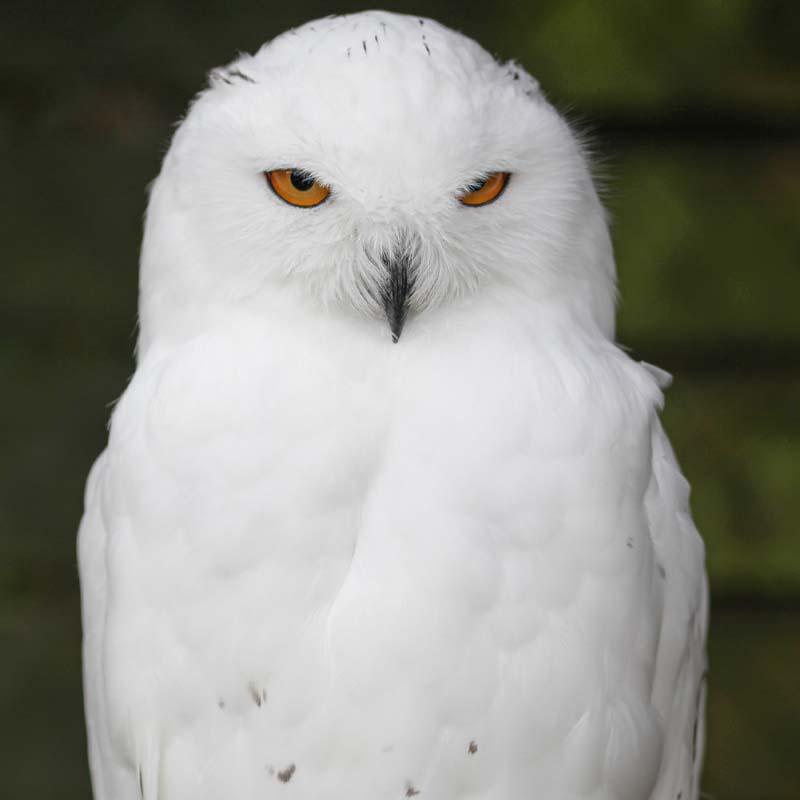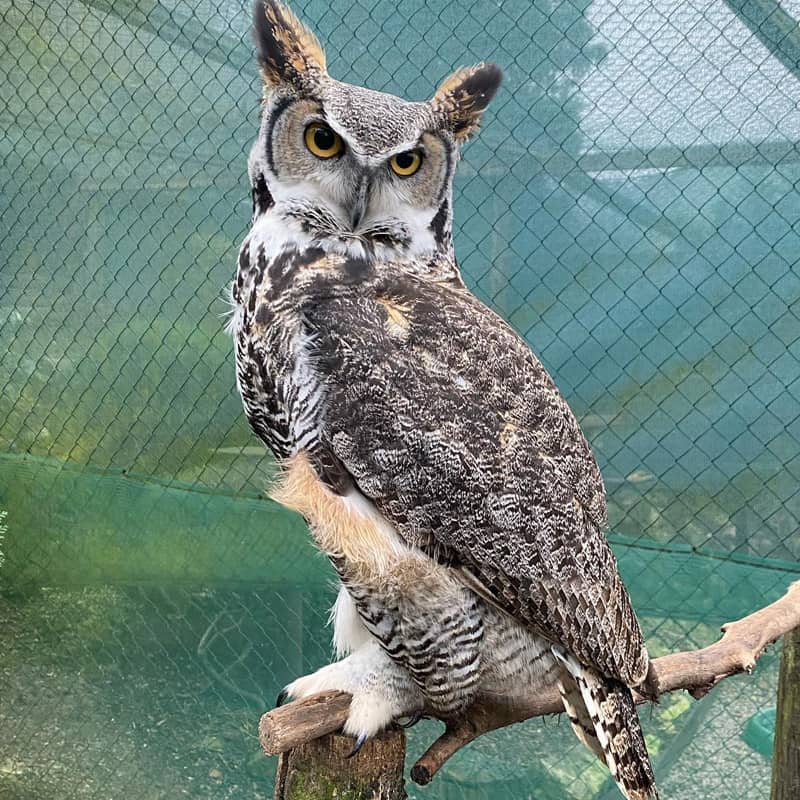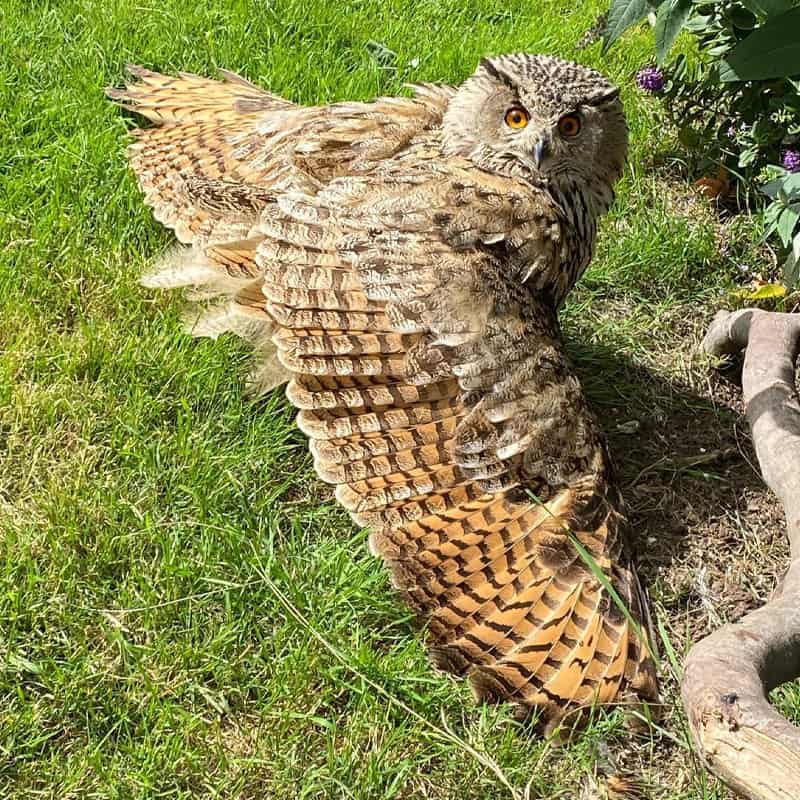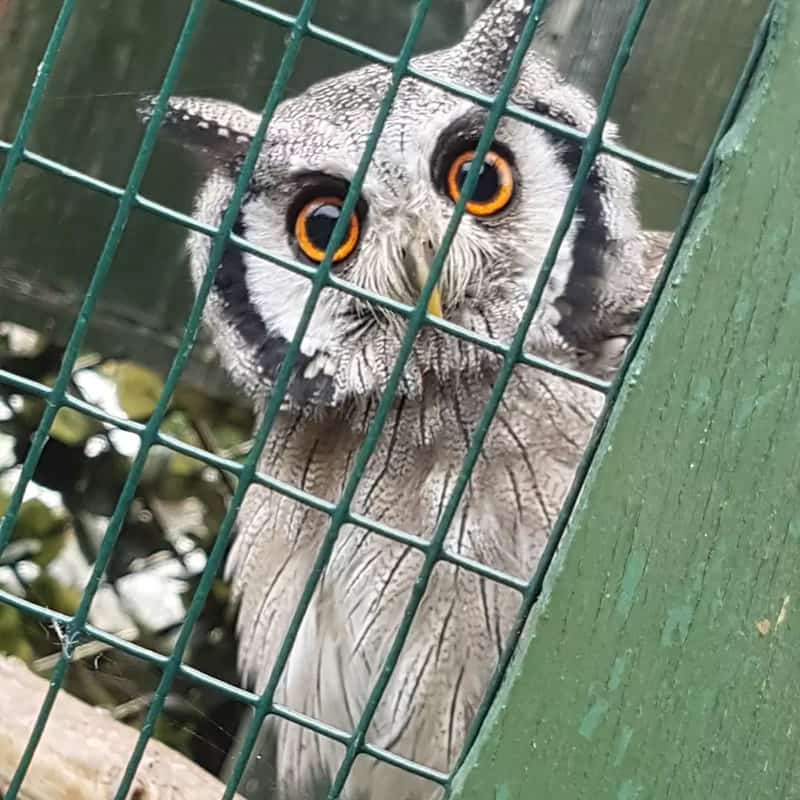Understanding Owls
Understanding Owls

General
All owls are predators which means that they are specially developed to capture and kill living things. They are superbly designed killing machines. Under the feathers, an owl has a sharp hooked beak and strongly arched talons, excellent ears and most can fly in almost total silence.
There are over 200 owl species in the world. The largest owl is the Eurasian Eagle Owl, which can be up to 75cm long. The smallest is the Pygmy Owl, which can be as small as 11cm long.
Most owls are nocturnal and hunt at night, but can also be seen hunting at dusk. Some owls in the UK, such as the Little Owl and the Short-Eared Owl are diurnal, i.e. they hunt during the day.
Owls see in the same way that humans do, with both eyes straight ahead. This is called binocular vision and enables the bird to judge distances accurately. Their eyes have adapted to help them to see when it is almost dark. But like us, in total darkness, they can see nothing so they always need some light to see.
Sight
Owls eyes are fixed in their skull so to look from side to side, the owls can swivel their heads up to 270 degrees in either direction. Like all birds of prey, owls have three eyelids – A top lid, a bottom lid and a third transparent membrane, which can move sideways to cover the eye at an incredible speed. This prevents damage to the eye when the owl is taking prey and feeding young.


Hearing
Owls have extremely sensitive hearing, which helps them to locate their prey. They do not have visible ears; the tuffs on the heads of some owls are often referred to as ears but are just small plumes of feathers.
The real ears are set at the edge of the facial disc in roughly the same position as our own and sounds are directed by the short stiff feathers around the facial disc to the openings on the side of the head.
In many species the ear openings are asymmetrical. One ear is larger than the other and is often placed slightly higher on the side of the head than the other. This system is so effective that the owl is capable of locating and taking prey virtually by sound alone. Owls often bob and twist their heads and this is to get still more information on what they can see and hear by ‘taking a reading’ from several different positions. This makes an owl able to hear the softest rustle of its prey to locate the sound precisely.
Owls don’t have a sense of smell, so they can’t ‘sniff’ out prey. Almost all of the diurnal birds of prey (eagles, hawks and so on) are the same as owls and have no sense of smell. However, there is one that does; the Turkey Vulture has developed a sense of smell so that it can find carcasses hidden in the undergrowth of the rainforests of South America.
Plumage
Apart from specialised eyes and ears owls have other adaptations to assist their hunting. Their plumage is soft and, except in the case of fish-eating species and a few diurnal species, the flight feathers have fine, comb-like fringes which deaden the sound made by the movement of the wings through the air. Not only does this mean that prey can’t hear the approach of the owls, but the owl can still use its own hearing while airborne, without interference from the rush of air through its feathers. The owl’s feathers are also coloured and patterned so that the bird is camouflaged and not easily seen. Owls, which live in deserts, are usually sandy-brown, owls that live in areas that have snow are usually white, owls that live in woodland areas are usually brown and owls, which live in rocky areas, are grey.
Most owls swallow their food whole, which is then broken down inside their body. About eight hours later the owl regurgitates a pellet which contains parts of the owl’s prey that cannot be digested – bones, fur and insect parts. An owl’s pellets are usually found under its roost or nest site and give us useful information about its prey at different times of the year. They also give us information on the condition of the owl by what the pellet contains.


Territory
An owl has, like other birds, a territory. In defence of his territory, he chases away male members of the same species. He lets them know he is the boss in his area with his voice. Owls mate in the spring. A male will only allow female owls into his territory; he chases away other males. Different species of owls have different preferences for nest sites and types of nests; they nest in tree holes, in barns, on the ground or in old nest sites of other birds. No owl in the world ever constructs its own nest.
Many owls live alone most of the year. This living alone is called ‘solitary’ life. Occasionally, especially in the winter, small species of owl roost together in one area. Life in the animal kingdom is the ‘survival of the fittest’.
Eggs and Young

